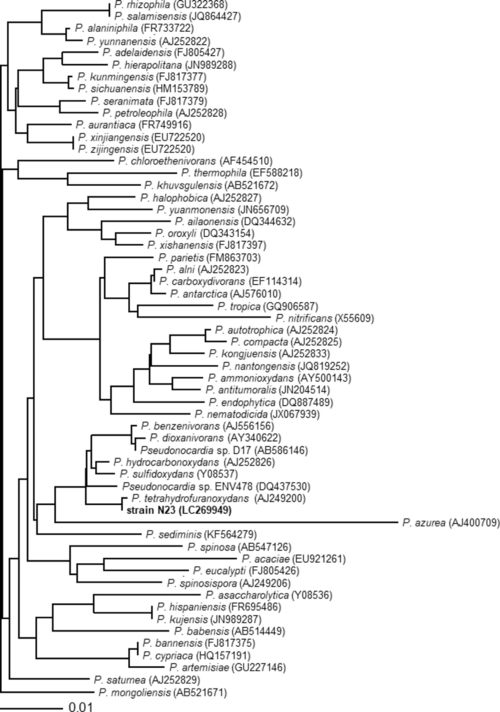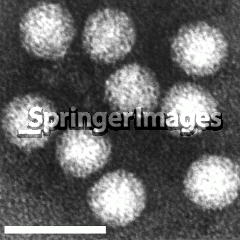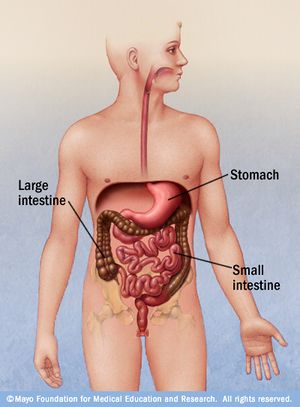Aichi virus: Difference between revisions
No edit summary |
No edit summary |
||
| Line 2: | Line 2: | ||
<br><br><br> | <br><br><br> | ||
[[File:Phylogeny.png | [[File:Phylogeny.png|500px]] Phylogenetic Tree of the Kobuvirus Genus that includes the Aichi Virus [http://www.picornaviridae.com/kobuvirus/kobuvirus.htm Picornavidae] ]. | ||
==Baltimore Classification== | ==Baltimore Classification== | ||
Revision as of 16:27, 3 May 2013
A Viral Biorealm page on the family Aichi virus
 Phylogenetic Tree of the Kobuvirus Genus that includes the Aichi Virus Picornavidae ].
Phylogenetic Tree of the Kobuvirus Genus that includes the Aichi Virus Picornavidae ].
Baltimore Classification
The Aichi Virus is a (+) ssRNA .
Higher order categories
Viruses; ssRNA viruses; ssRNA positive-strand viruses, no DNA stage; Picornavirales; Picornaviridae; Kobuvirus; Aichi Virus
Description and Significance
The Aichi Virus is a member of the Kobuvirus genus in the Picornaviridae family. It is a positive sense, single-stranded RNA virus. The virus Aichi Virus appears to morphologically resemble astroviruses when examined by electron microscopy .
Genome Structure
The Aichi Virus is a positive sense single stranded RNA virus with a genome of 8,280 nt and a poly (A) tail, which helps with the stability and
decreases degradation of the RNA molecule.It has a 59% G+C content, which is very high for Picornaviridae. The virus also can be divided into 2 genotypes, A and B, with around 90% sequence homology.

Virion Structure
The stem-loop at the 5' end of the Aichi Virus genome is an element involved in both viral RNA replication and production of infectious virus particles [1] ].
Reproductive Cycle in a Host Cell
Reproduction occurs when there is successful attachment of the virus to a host’s receptors. Host receptors help with endocytosis of the virus into the cell. The capsid of the of the virus changes and is thought to open a pore within the host's endosomal membrane and the viral genomic RNA infiltrates the host cell cytoplasm. A protein, VPg, is taken out from the viral RNA and translated into a processed polyprotein. Replication happens in "viral factories" from the membrane vesicles resulting from the ER. A double stranded RNA genome is made from the genomic ssRNA (+). The dsRNA genome is transcribed/replicated thereby providing vial mRNAs/new ssRNA (+) genomes. It is thought that new genomic RNA is put into assembled procapsids. The cell lyses and the viruses are released .
The virus’s L protein is needed for viral RNA replication. There has been ongoing research about the significance of the L protein, which is important for viral RNA replication and excapsidation within virus replication. This is a unique aspect of the Aichi Virus compared to other Picornoviruses .

Viral Ecology & Pathology
Not much is known about the epidemiology of the virus. However, the Aichi Virus was first found in 1989 as the cause of oyster-associated non-bacterial gastroenteritis in man.It has also been isolated from Japanese travelers in Southeast Asia and has been found in fecal specimens of children with diarrhea in several countries like Brazil, France, Germany, and Tunisia. An infection caused by the Aichi virus can result in Gastroenteritis (the stomach flu). The virus is found to be mostly food borne. Symptoms include nausea and vomiting among others. Not much else is known about the virulence factors.
References
Example: J Bacteriol. 2005 May; 187(9): 3188–3200. doi: 10.1128/JB.187.9.3188-3200.2005
Aichi Virus human/hun298/2000/hun. (n.d.). Retrieved from http://www.ncbi.nlm.nih.gov/Taxonomy/Browser/wwwtax.cgi?mode=Info&id=571505&lvl=3&lin=f&keep=1&srchmode=1&unlock
Sasaki, J. (2001). Construction of an infectious cdna clone of Aichi Virus (a new member of the family picornaviridae) and mutational analysis of a stem-loop structure at the 5' end of the genome. J Virol,75(17), 8021-30. , doi: 10.1128/JVI.75.17.8021-8030.2001
Viralzone:kobuvirus. (n.d.). Retrieved from: http://viralzone.expasy.org/viralzone/all_by_species/652.html
Yang S, Zhang W, Shen Q, Yang Z, Zhu J, Cui L, et al. Aichi Virus strains in children with gastroenteritis, China [letter]. Emerg Infect Dis [serial on the Internet]. 2009 Oct [12 Feb 2013]. doi: 10.3201/eid1510.090522
Yamashita, T. (1998). Complete nucleotide sequence and genetic organization of Aichi Virus, a distinct member of the picornaviridae associated with acute gastroenteritis in humans. JVirol, 72(10), doi: http://jvi.asm.org/
